Marketing Data: The Ultimate Guide
Marketing professionals have always relied on data and data analysis to generate valuable insights into their campaigns' performance. Even before the rise of digital marketing, companies collected event attendees' or survey applicants’ data. And now, when the bulk of marketing happens online, there’s even more marketing data you can manage and analyze for actionable insights.

Aug 05 2021●7 min read
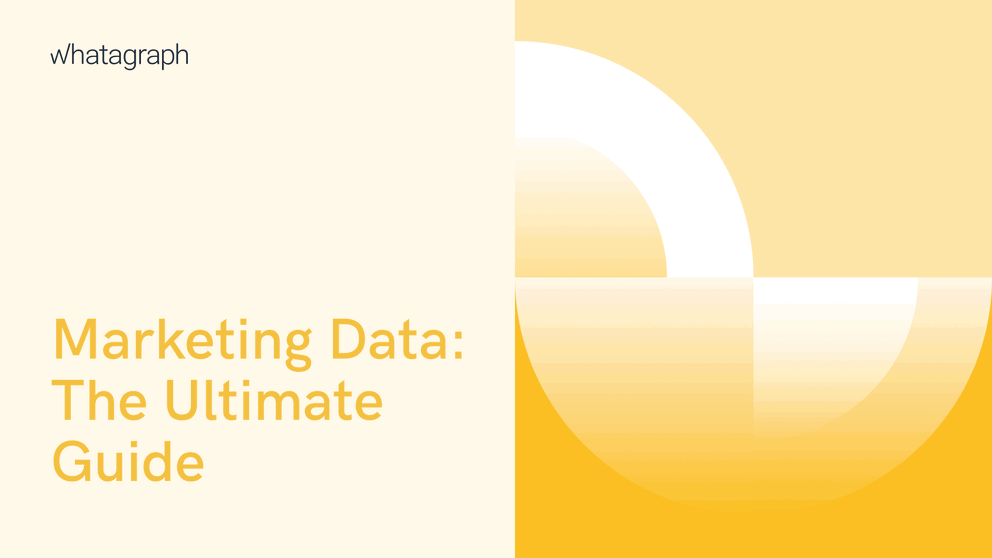
What is marketing data?
Marketing data is the machine-readable information marketing teams collect from their marketing channels to create compelling content, identify ideal customer profiles, and nurture more effective campaigns.
Benefits of marketing data
Accurate, timely, and relevant marketing data can help teams target niche markets, support tailored sales strategies, and give sales teams knowledge to convert BOFU leads into paying customers.
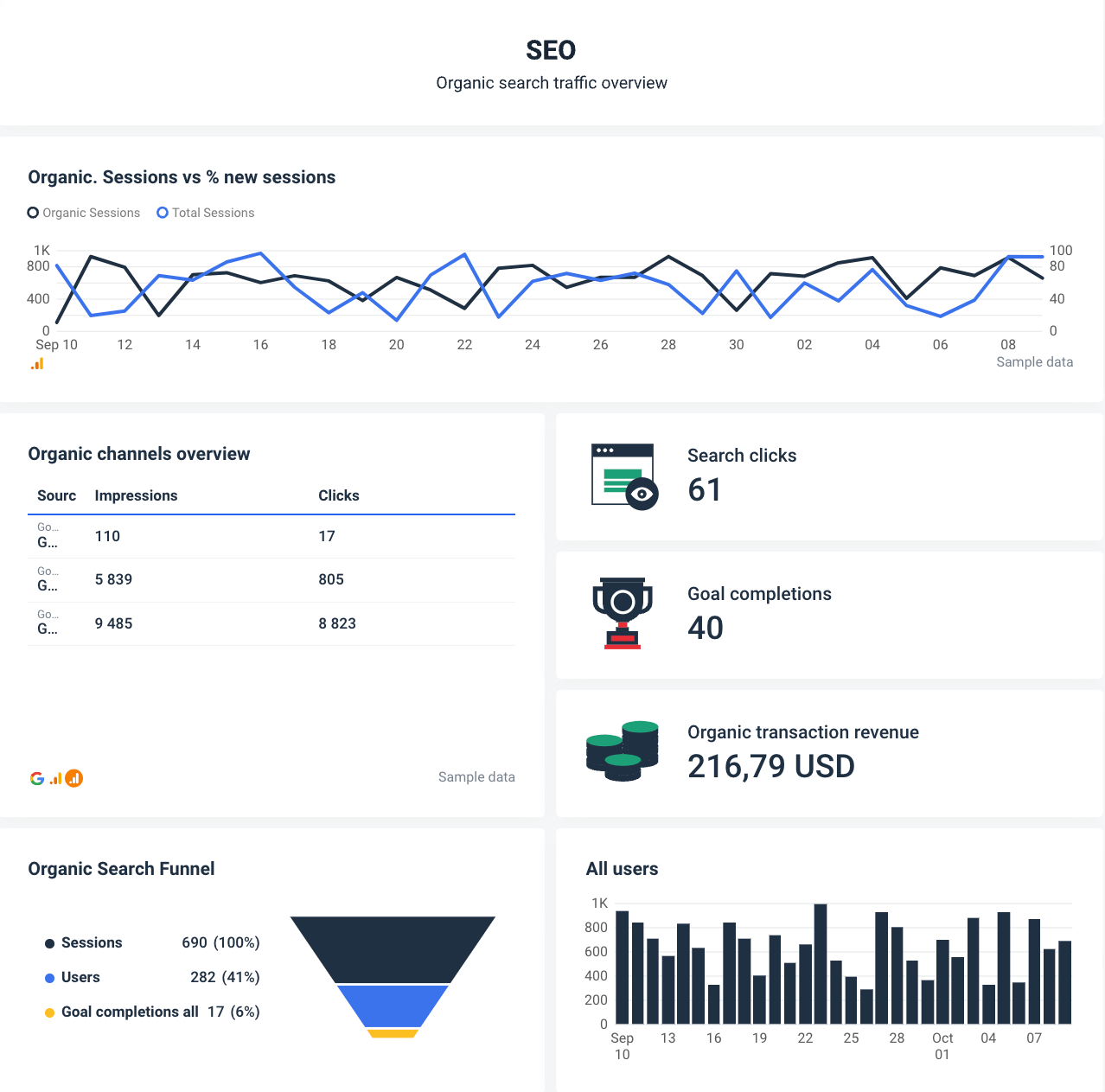
But marketing data benefits are like an onion; you peel one layer to find another. So here are three main reasons why tracking marketing data is important.
A better understanding of your customers
Knowing your customers has always been the basic rule in any business, but it’s bread and butter in digital marketing.
Nowadays, you can log and measure every prospect's interaction with your brand. Through lead scoring, you can rate your marketing leads based on the quality of those interactions. This allows you to effortlessly single out the most promising prospects.
Data analytics has a role in every marketing activity you can imagine, for example:
- Marketers can use data to increase the conversion rates of their campaigns by tailoring the message to better resonate with the target audience.
- Content marketers can create content that hits prospects’ actual pain points.
- SEO specialists can discover which keywords are worth targeting.
- PPC marketers can learn which ad types are the most effective.
- Product marketers can identify the features that customers find the most helpful.
Streamlined promotions
Marketing data helps your product or service stand out from the competition because data insights can tell you:
- Who is the right audience for your product or service? Where they work, what positions they hold, and what they use it for.
- Where to reach that audience? What channels do they use the most, and what’s the best time to engage them?
- What messages will they respond to? What challenges do your prospects face, and how can you improve your product or service and keep them informed?
More efficient marketing process
If you’ve ever worked in a SaaS marketing team, you know that the most precious resource is time. However, a data-driven marketing mindset can improve your team's productivity and save you more time for tasks in your project management tool. By tracking the right metrics and KPIs, CMOs can identify which marketing tasks produce the best results.
Marketing data is an integral part of the constant revision and optimization cycle. You can use it to decide which blogs to publish or update, what ads to run, and what social media content resonates with your followers. A/B testing is another team process that relies on marketing data for decision-making, where you compare two feature versions to determine which performs better.
Types of marketing data
There are many types of marketing data, but here we’ll focus only on the most important six types:
- Audience data
- Campaign data
- Sales data
- Customer satisfaction data
- Market data
- Competitor data
1. Audience data
Let’s start with your audience or customer data, which gives you their demographics, geographic attributes, interests, preferred communication channels, etc.
You can collect this type of data in multiple ways, for example, by tracking which sorts of people visit your website or find patterns in the profiles of people who have already purchased your product.

No matter how you measure your customer behavior, audience data is essential to understanding your buyers and prospects. By obtaining that information, you’ll have better chances of increasing your customer engagement and marketing to those groups more effectively.
2. Campaign data
The second most important type of marketing data shows your marketing campaigns' performance. Using this data, you can see what results each campaign delivers and trace leads and sales back to specific campaigns to gauge which ones perform better. The metrics you should track in this category include:
- Email open rate
- Click-through rate (CTR)
- Conversion rate
- Bounce rate
- Cost per lead (CPL)
- Return on investment (ROI)
The critical step here is to set up a tracking system to trace specific conversions to specific campaigns. Without it, you won’t be able to tell which campaigns are bringing in conversions.
3. Sales data
You know what they say — “Every position is sales''. We may joke, but it all boils down to sales and revenue when you run a business. If you want to be on the same page with the sales processes, you need to ask questions like:
- How much of each product we’re selling?
- Who buys our products?
- How much revenue comes from our products?
Monitoring this marketing data category helps you estimate your marketing efforts' success and replicate the formula for the products or services that don’t sell as well. Conversely, it tells you where your marketing effort has paid off.
4. Customer satisfaction data
Tracking sales and revenue data goes hand in hand with monitoring customer experience data, as you can’t hope to sell many products if your customers aren’t happy. In other words, to ensure a smooth customer journey, you need to know how your audience responds to your products and services.
You can track this data by monitoring metrics like net promoter score (NPS), which measures how likely customers are to recommend your business to others. Alternatively, you can send surveys to customers and use the feedback to improve your business processes.
5. Market data
Tracking marketing data goes beyond focusing only on yourself and the immediate competitors but also includes keeping up with trends in your industry. For example, if a new product starts taking your industry by storm, you want to find out what makes it so attractive for users and try to implement those features into your own offer.
6. Competitor data
Retaining old and earning new customers is hard enough, but guess what — at least a dozen other businesses in your niche are competing for the same people's hearts, minds, and budgets. You can’t risk having one of your main competitors winning over prospects using innovative tactics you’re unaware of.
Tracking competitor data is important for customer retention. It can give you insight into what kinds of campaigns your competitors use, how they rank in search results, what kind of engagement they receive, and other information that helps you gain competitive intelligence.
For example, product marketers can use this information to create comparison tables where your product or service is compared with the leading competitors. This way, you can isolate your strengths and create battle cards for the sales team to use during the prospect calls.
Where is marketing data collected from?
Marketing data is collected from various touchpoints and interactions between the customer and the brand, which can be company-level or public sources. The aggregated data drives marketing analytics to evaluate the effectiveness of any marketing campaign and justify the ROI (return on investment) of these campaigns.
The private sources are also known as company-level sources for marketing data extraction, and they are:
- Websites where the company and business information can be searched for and found online.
- Company website analytics that showcases the data on visitors of the business’s website.
- Advertisement-gathered data sources, such as Facebook or Google Ads, allow marketers to view the performance data of the advertising campaigns.
- Social media profiles are where brands and individuals create information about themselves available to others. Social media marketing is one of the most popular marketing tactics that allows you to reach a brand's target audience and extract performance data for relatively low costs.
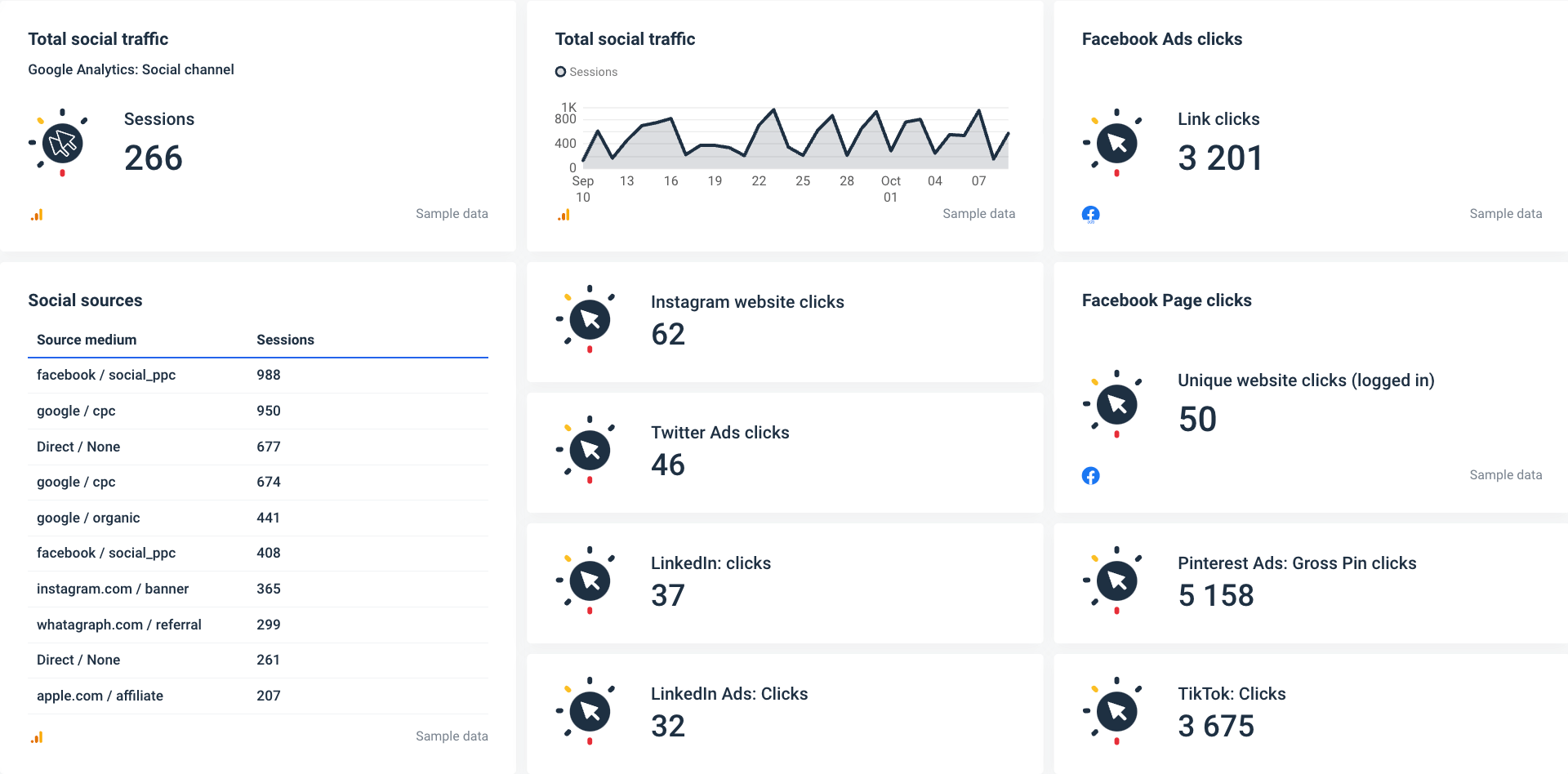
Interesting fact: Statista found that in the B2B industry, LinkedIn is the most popular social media platform for data collection.
- Online content that is published and is available free-to-view or read. For example, blogs, videos, podcasts, webinars.
The public sources for marketing data collection are:
- Pay-walled content that requires visitors to pay to access the content.
- Market intelligence software that provides industry-specific information on companies, sectors, and supply demands.
- DaaS (data as a service) or companies that are managing their databases and making the marketing data available on subscription.
- Public surveys are conducted by the commission for businesses to find out the competitive landscape, market demand, customer satisfaction, and behavior and make data-driven insights.
Extra tip: If you are unfamiliar with marketing data extraction, we recommend using reporting tools. Reporting tools can help you gather all marketing data from different sources, clean, and visualize it. By using data monitoring tools, marketers can cut time on routine tasks, avoid critical mistakes, improve marketing strategy, and even sell easy-to-understand visual reports as an add-on feature for clients.
Marketing data examples
Let’s take a look at some examples of marketing data. To make things organized, we’ll divide the examples into seven categories:
Demographic data — data related to personal and geographical attributes used to identify your ideal customer profile:
- Name
- Age
- Email address
- Phone number
- Location
- Employment
- Skills
These data examples are the foundation of demand generation efforts, as they allow you to target potential customers through email marketing campaigns.
Firmographic data — used for account-based marketing, where you target decision-makers in one company:
- Company name
- Company location
- Industry
- Number of employees
- Revenue
Technographic data — a collection of information about technologies that prospects or companies use. It has two benefits:
- Understand the prospect’s workflows, how they can be improved, and what pain points they face. Especially useful if you provide a solution that other competitors don’t.
- Understand which technologies other companies use to evolve your own workflow. Check what your competitors use and decide whether you should implement similar solutions yourself.
This marketing data type is a treasure trove for product marketers who use it to map features and benefits against competitors.
Chronographic data — real-world events that affect individuals, companies, and industries. Often indicate when a prospect or company is ready to buy. Here are a few examples:
- A company has moved to a new location.
- A prospect has moved in with another company.
- A company has acquired new funding.
- A prospect has partnered up with a competitor.
- A company has announced multiple open positions.
However, keep in mind that chronographic data sets expire very quickly. If you don’t act promptly, you risk missing an opportunity.
Intent marketing data — refers to the measurement of online users’ behavior, for example, where they go and what they interact with. Intent data’s purpose is to learn and predict what the user will do next. It also allows the company to indicate when a prospect has the strongest intention to purchase.
Intent data is split into two categories — first-party and third-party. First-party marketing data is the information a business collects about its platform or service users. The information gathered from other data providers, such as search engines and social media platforms, is called third-party intent data.
Quantitative data — consists of statistics that marketers need to interpret. This marketing data is collected using analysis tools such as Google Analytics 4.
Quantitative data points include:
- Website clicks
- Click-through rates
- Email open rates
- Form completions
- Customer information
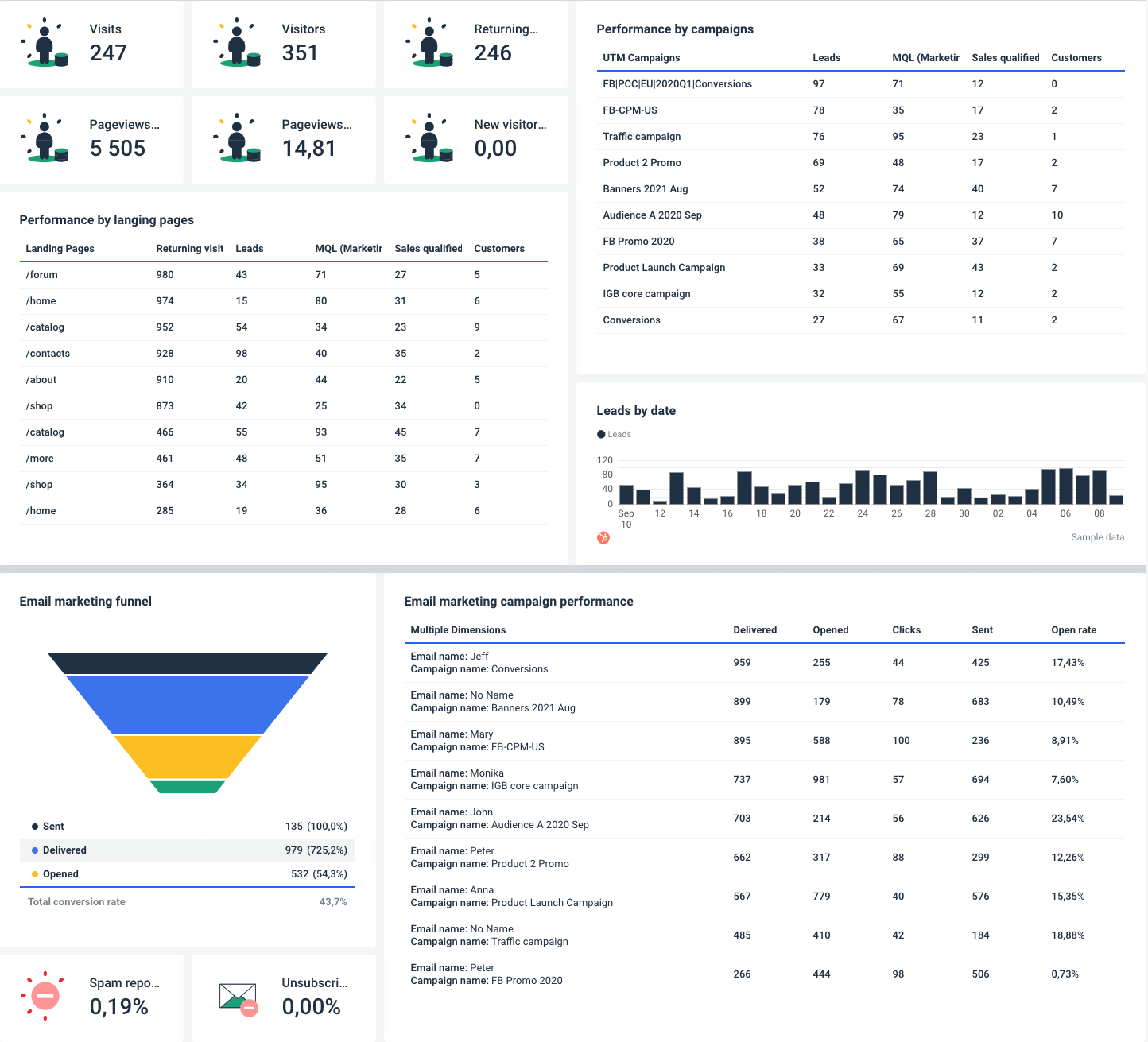
Qualitative data — answers the question “How was x?”. Unlike quantitative data, this data type deals with quality instead of numbers. It can tell you what type of person the prospect is. Collecting qualitative data is challenging on a scale, but it’s worth having when speaking to a prospect.
Some examples of qualitative data include:
- Notes from previous conversations
- Questionnaire completions
- Product feedback
- Social media activity
Marketing data automation
Dealing with large amounts of marketing data can be challenging. Luckily, there are marketing automation tools that make marketing data gathering, aggregation, and analysis easier and less time-intensive.
One of the ways to handle large amounts of data is to use a marketing reporting tool. Reporting tools automatically gather all marketing data from different channels and allow marketers to build visual reports on the campaigns’ performance.
Whatagraph is one such tool. However, Whatagraph is more than just a reporting tool. It’s an all-in-one marketing data platform that connects, visualizes, and shares your marketing data in one workflow, saving you much time.
Thanks to over 45 native integrations with popular marketing tools, you can connect your data with a few clicks and then visualize it using one of many report and dashboard templates from our library.
Among the supported platforms, you can find website analytics tools, social media, SEO, eCommerce, email marketing, paid advertising tools, and CRMs like HubSpot and Salesforce.
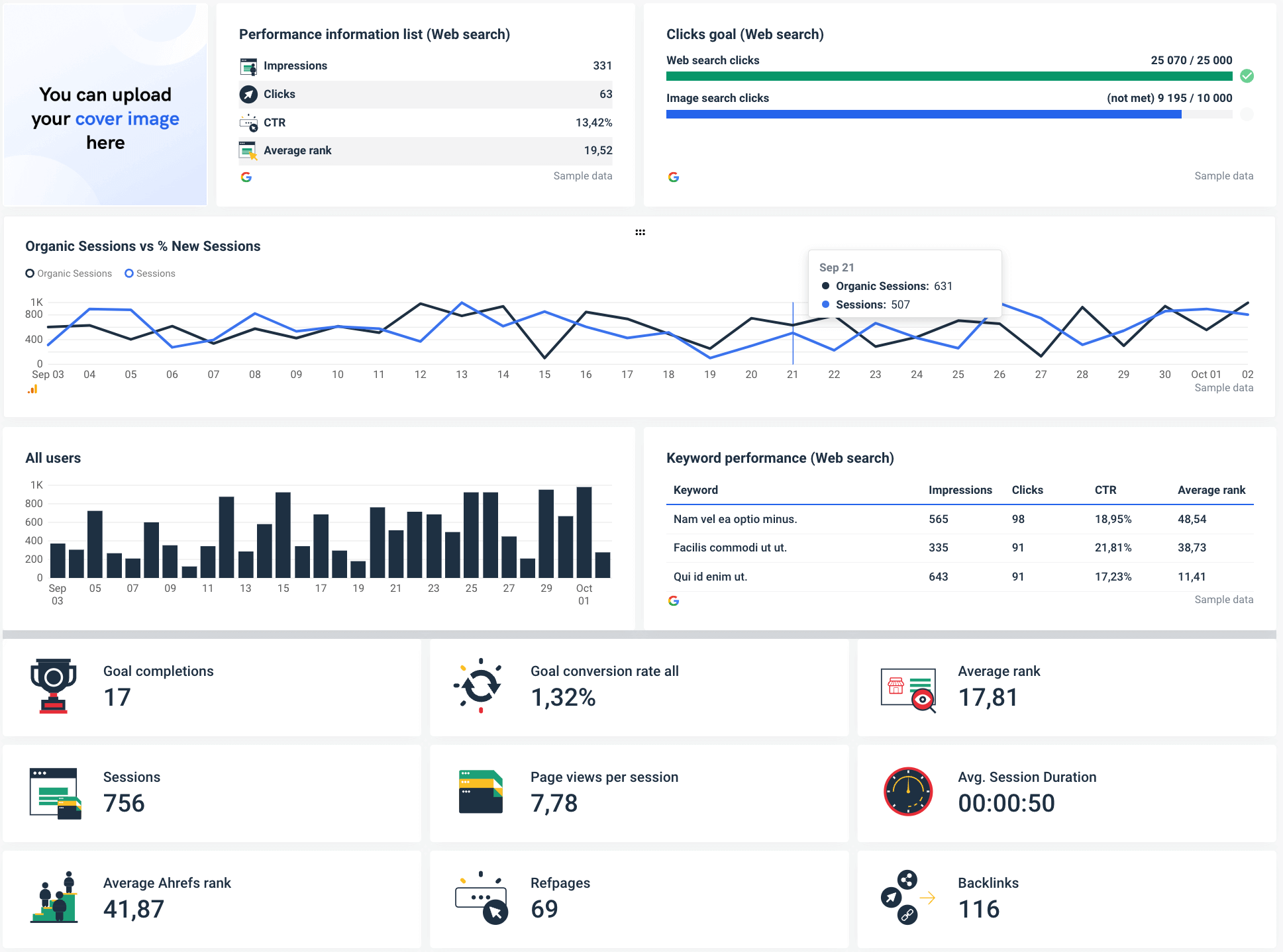
You can also build your visual report from scratch by dragging pre-built widgets onto a blank report page. Create new widgets and metrics, blend metrics and data sources within one widget, save it as a template, and much more.
Sharing reports and dashboards is also automated. Use an email scheduling feature to add recipients, frequency, and time of sending to automate the process or simply share a live link to a report or dashboard.
Whatagraph allows marketers to cut time on routine marketing data visualization tasks and effortlessly automate and send easy-to-digest reports with just a few clicks.
Bottom line
The bigger the company, the more marketing data it needs to generate valuable insights. It’s wrong to think that you need to perform data analysis only once and use the collected marketing data forever. The truth is that marketing is an ever-changing landscape, and so is marketing data.
You must measure and analyze metrics constantly and adjust your marketing strategy according to data-driven insights.
If big data is the oil of the new age, learning to extract and leverage it through data platforms allows you to scale your businesses and stay ahead of the competition.
Learn more about how Whatagraph helps other marketing agencies connect, visualize, and share data from various sources and streamline their client reporting process in our case studies.

WRITTEN BY
Benediktas KazlauskasBenediktas is a detail-oriented writer with a passion for marketing and technology. Using his vast experience in Business Management and Sales, he approaches every blog with the same idea: How to make readers come back for more?